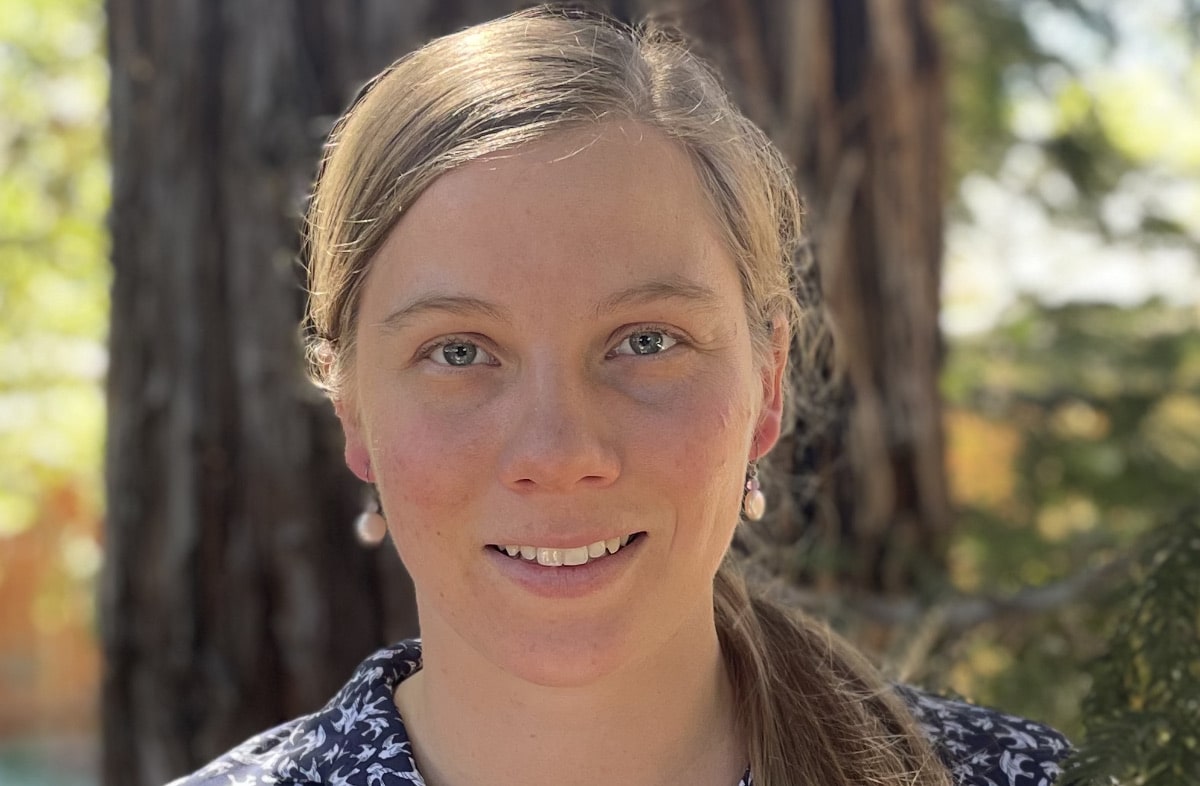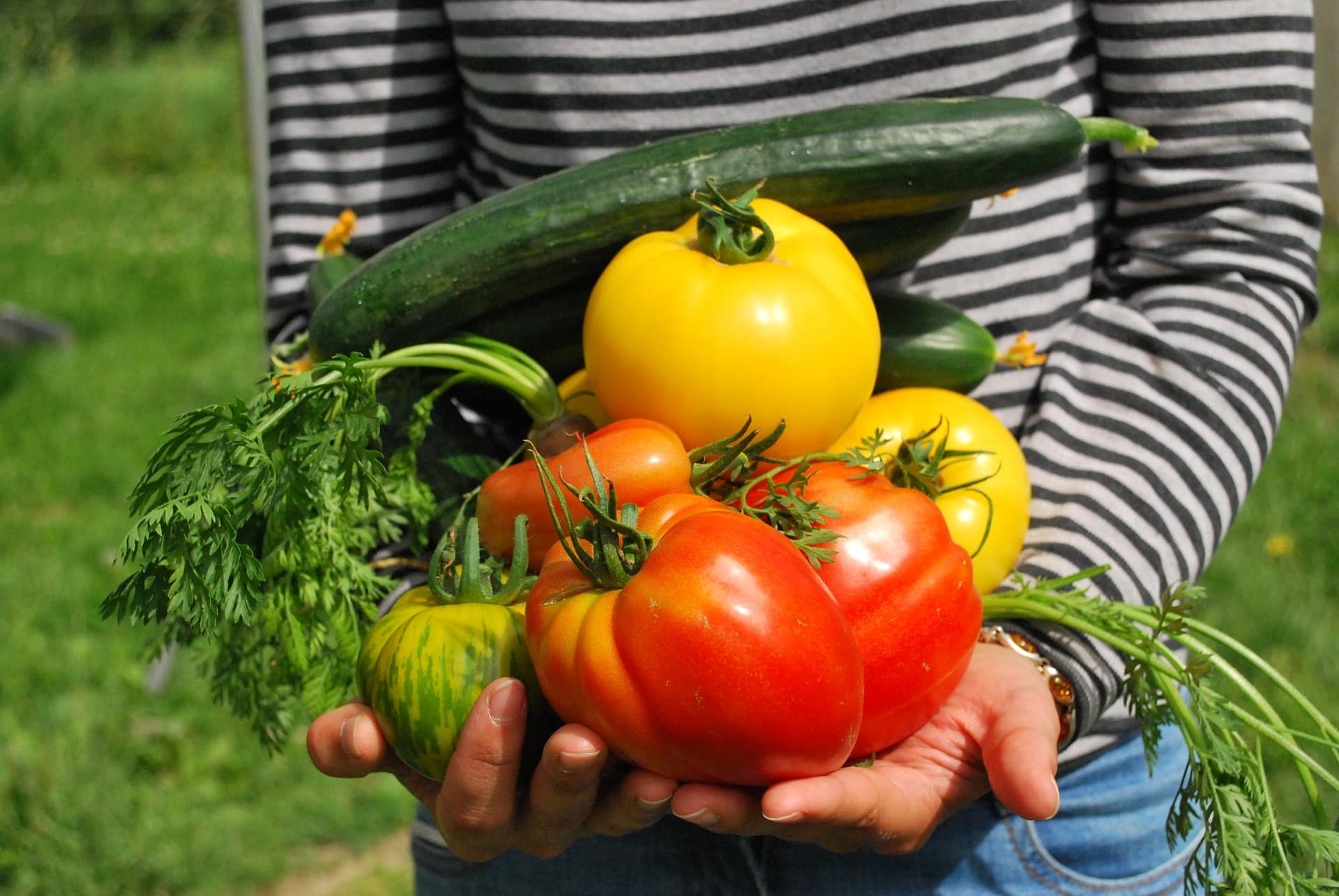Kimberly Gibson is a Ph.D. candidate studying the effects of plant genetic diversity on insect herbivores under Professor Paul Gepts at the University of California, Davis. Her research is focused on characterizing the mechanisms and heritability of biochemical defenses deployed by lima beans against their main insect pest, the western tarnished plant bug. She is also a 2021 National Association of Plant Breeders (NAPB) Borlaug Scholar. She tells us her story.
I enjoy cooking gourmet meals for large groups of people and can do it on short notice. I picked up this skill at family gatherings, developed it as a kitchen manager in an undergraduate cooperative house of 30 students at Stanford, and perfected it as Head of Garden at Four Winds Camp on Orcas Island where I taught basic gardening and cooking to 90 students ages 6-16 each day in the summer of 2013.
I grew up in Fresno, CA, as part of a family that has been engaged in agriculture for several generations. My grandparents farmed avocados and sweet corn and were managers of the farmers market in Cambria. As a teen I loved gardening and propagating houseplants. I was the founding president of my high school’s ecology club and on one occasion convinced my peers to guerrilla garden a vacant strip of land along the train tracks with native plants.
Reading Michael Pollan’s “The Botany of Desire” and attending the 2008 Slow Food Festival in San Francisco further cultivated my interest in food and agriculture.
I think it is important for a plant breeder to be familiar with culinary techniques and flavor combinations as these can affect the success of new varieties. I acquired my interest in plant breeding through an indirect path of study, research, work, and travel. The experience which first inspired me to consider a career in plant breeding was reading “Where our Food Comes From” by Gary Nabhan during lunch breaks from field work in India — I was there during Ramadan and would sit outside local mosques and read while my translator attended mid-day prayers.
One day I saw a group of farmers loading drought-sensitive rice plants into a truck to move them from a village where the wells had gone dry to a neighboring town with deeper wells. Considering the huge amount of extra labor that these subsistence and small market farmers were having to take on because climate change had already begun to disrupt the usual monsoon season underscored the urgency of developing crop varieties that could better withstand the more variable conditions which have become our new normal.
Later, while working on restoring forests that were slashed and burned for agriculture in Mexico, I came to appreciate the need for sustainable relationships between agricultural land and the surrounding ecosystems. This contributed to my interests in plant-insect interactions.
Plant breeding for insect tolerance and reduced pesticide use is a critical need for both conventional and organic farming systems. Climate change, pesticide resistance, and consumer demand all contribute to the need for improved insect-tolerant varieties. Key to developing such varieties is understanding the inheritance of resistance mechanisms to pests and attraction of beneficial insects. By combining research in plant breeding methods, high throughput phenotyping, and genetic analyses, we will better understand how Lima beans (Phaseolus lunatus) can be improved for defense against the insect pest, Lygus hesperus.
Specifically, I am studying the relationship between Lygus and genetically diverse Lima bean varieties with variable major agronomic traits, conducting a genome-wide association study on the effect of domestication on defensive cyanogenesis, determining the extent to which cyanogenesis is constitutive or induced in the presence of Lygus in domesticated varieties, and exploring the role of volatile organic compounds and other secondary metabolites in plant defense. I also participate in the UC Davis Dry Bean Breeding Program for conventional systems and am a team leader in the student-led SCOPE breeding program for organic systems. Through these programs, I have been engaged in almost every level of the breeding pipeline including parent selection, crossing, field evaluations, and advanced line selection.
Since Stanford University did not have a major focused on food systems and agriculture at the time of my matriculation, I opted for an interdisciplinary major in urban studies which allowed me to take the classes in a wider array of interesting topics, engage with my peers in more seminar-style class discussions, and explore my parallel interests in justice, equity, and social movements. As an undergraduate I learned about ecological field methods as a docent at the Jasper Ridge Biological Reserve and developed an interest in teaching as a weekly volunteer in a garden-based high school class at the Redwood Environmental Academy of Leadership.
I was an intern with the International Water Management Institute (IWMI) based at ICRISAT in the summer of 2012. My project was self-designed and funded by a Stanford Undergraduate Advising and Research Major Grant and a Stanford Center for South Asia Community Service Fellowship. Through oral surveys, I studied the effect of rapid urban growth on small-scale periurban women farmers outside the city of Hyderabad, India.
The resulting thesis, “Arrival of the City: The Impacts of Urban Expansion on Periurban Agricultural Communities of Sangareddy, India,” won the Michelle Zimbalist Rosaldo Prize for Outstanding Thesis on Women and Gender. On a few occasions I also helped in the fields or with other IWMI research. The success of this endeavor was in large part due to the assistance of my wonderful IWMI driver/translator Mohammed Qadir and the encouragement of a small group of fellow students who also lived in the ICRISAT dorms.
My fondest memory from that summer was being informally interviewed about my research by Varsha, the 10-year-old daughter of one my research subjects. She was very bright and curious and spoke the best English in her family. The interaction made me acutely aware of the immense privilege that I have as an American woman able to travel, study, and make change in the world. I have thought often of Varsha in the years since and hope that she has had opportunities beyond the hard labor of subsistence farming to use her intelligence and curiosity. I also hope that by pursuing a career in plant breeding I can contribute to the development of higher yielding crop varieties that will help families like Varsha’s to lift themselves out of poverty and food insecurity.
From July 2015 to May 2016, I lived in Mérida, México and worked in surrounding Maya communities. This was a time of discernment between leaving a job in nonprofit fundraising and starting graduate school. I split my time between teaching English at the community literacy organization Proyecto Itzaes and helping with research and administration at Centro de Educación Ambiental de la Península Yucateca (CEAPY), which operates Reserva San Nicolás, a bioreserve of Seasonally Dry Tropical Forest in the center of the Yucatán Peninsula.
The work was challenging but rewarding. Despite being a native English speaker, I did not feel prepared to teach English and so had to do a lot of self-directed study of curriculum design and grammar rules. At the bioreserve, I wrote a trilingual guidebook (Spanish, English, and Maya with translation by Tere Canul) for local middle and high school students. I also conducted surveys with members of the closest neighboring village to the bioreserve about how they viewed the conservation of forests and traditional ecological knowledge.













